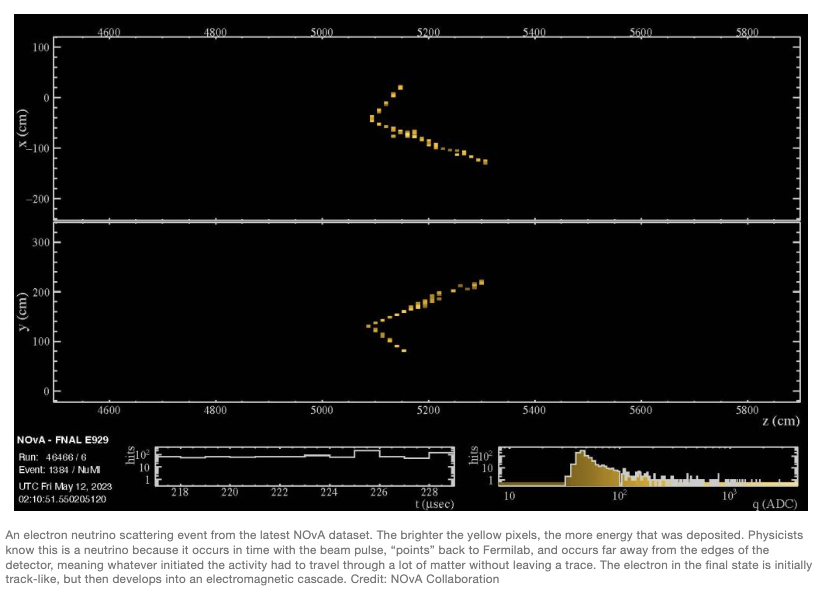New NOvA Results Add to the Mystery of Neutrinos
The international NOvA collaboration has released new findings at the Neutrino 2024 conference in Milan, Italy, on June 17. These latest results add further intrigue to the study of neutrinos, one of the universe's most mysterious particles.

An electron neutrino scattering event from the latest NOvA dataset. The brighter the yellow pixels, the more energy that was deposited. Physicists know this is a neutrino because it occurs in time with the beam pulse, “points” back to Fermilab, and occurs far away from the edges of the detector, meaning whatever initiated the activity had to travel through a lot of matter without leaving a trace. The electron in the final state is initially track-like, but then develops into an electromagnetic cascade. Credit: NOvA Collaboration
The international NOvA collaboration presented new results at the Neutrino 2024 conference in Milan, Italy, on June 17. The collaboration doubled their neutrino data since their previous release four years ago, including adding a new low-energy sample of electron neutrinos. The new results are consistent with previous NOvA results, but with improved precision. The data favor the “normal” ordering of neutrino masses more strongly than before, but ambiguity remains around the neutrino’s oscillation properties.
NOvA Analysis Coordinator, Dr Linda Cremonesi, leads the NOvA Queen Mary group, which includes academics Dr Abbey Waldron and Prof Jon Hays, postdocs Dr Alexander Booth, Dr Prabhjot Singh, and Dr Simranjit Chhibra, and PhD students Kevin Vockerodt and Oscar Chow.
The latest NOvA data provide a very precise measurement of the bigger splitting between the squared neutrino masses and slightly favour the normal mass ordering. That precision on the mass splitting means that, when coupled with data from other experiments performed at nuclear reactors, the data favor the normal ordering at almost 7:1 odds. This suggests that neutrinos adhere to the normal ordering, but physicists have not met the high threshold of certainty required to declare a discovery.
Read the full story here: https://news.fnal.gov/2024/06/new-nova-results-add-to-mystery-of-neutrinos/